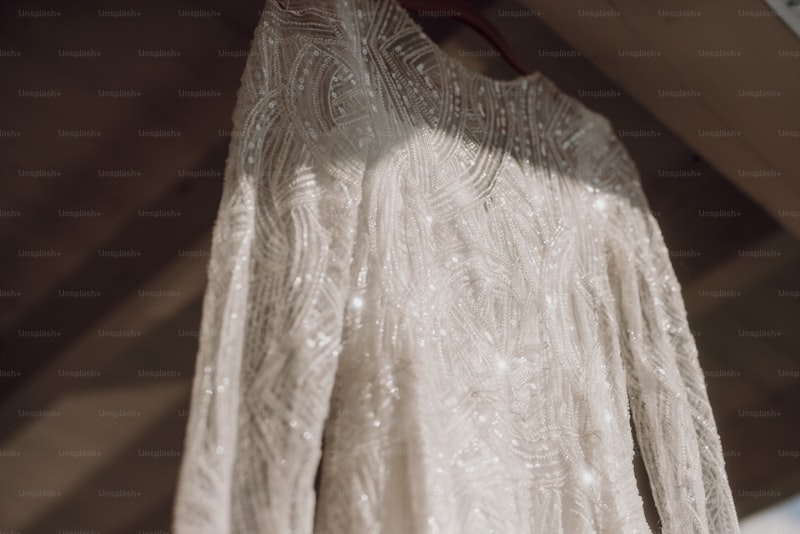Exploring Rich Textures in Wedding Dress Detailing: A Comprehensive Guide
When it comes to wedding dresses, the details can make or break the look. One of the most enchanting aspects of these garments is the rich textures found in wedding dress detailing. From intricate lace patterns to sumptuous fabrics like silk and tulle, the textures of a wedding dress play a vital role in creating the overall aesthetic and feel of the wedding day. In this article, we'll dive deep into the various textures that can be found in wedding dresses, providing you with insights, tips, and inspiration for your dream wedding look.
Understanding the Importance of Texture in Wedding Dresses
Textures contribute significantly to the visual and tactile experience of wedding dresses. They can add depth and dimension, transforming an otherwise simple design into something extraordinary. Here are some reasons why texture is crucial in wedding dress detailing:
- Visual Interest: Textured fabrics can create stunning visual effects, making the dress more captivating.
- Tactile Experience: The feel of fabrics against the skin can enhance the bride's overall experience.
- Tradition and Elegance: Certain textures, like lace or embroidered satin, convey a sense of tradition and elegance, making them popular choices.
Popular Textures in Wedding Dress Detailing
Different textures evoke different feelings and styles. Below are some of the most popular textures used in wedding dress detailing:
| Texture | Description | Best Suited For |
| Lace | Delicate, intricate patterns that can be layered over other fabrics. | Romantic, vintage styles. |
| Silk | A luxurious, smooth fabric that drapes beautifully. | Classic, elegant wedding gowns. |
| Tulle | A lightweight netting, often used for skirts and overlays. | Whimsical, fairy-tale themes. |
| Beading | Adding sparkle and shine through various bead placements. | Glamorous, evening receptions. |
| Embroidered Fabrics | Fabrics adorned with stitched designs, creating a textured look. | Bohemian or artistic styles. |
Incorporating Rich Textures into Your Wedding Dress
When selecting a wedding dress, consider how rich textures can enhance your overall look. Here are some tips on how to incorporate these details effectively:
1. Choose the Right Fabric
Start by choosing the fabric that speaks to you. Whether it’s the flowing nature of silk or the romantic allure of lace, the fabric sets the tone for the entire dress.
2. Layering for Depth
Don’t be afraid to layer different textures. A lace overlay on a silk dress, for instance, can create a contrast that is visually appealing and unique.
3. Strategic Placement of Details
Think about where to place textured elements. Adding lace at the neckline or beading at the waistband can draw attention to specific areas and enhance your shape.
4. Pay Attention to Color
Rich textures can be complemented or contrasted by color. Consider how a cream lace would appear against an ivory silk base, or how vibrant beading can pop against a more subdued fabric.

Examples of Rich Textures in Wedding Dress Detailing
Many designers creatively use textures to elevate their bridal collections. Here are some examples:
- Pronovias: Known for their stunning lace dresses that blend classic and modern elements.
- Vera Wang: Features exquisite draping and layering techniques, showcasing silk and tulle in breathtaking ways.
- Paloma Blanca: Incorporates intricate embroidery and detailed beading to create stunning bridal masterpieces.
Rich Textures Across Cultures
Wedding dress textures also vary globally, shaped by cultural traditions and preferences. For example:
- In India, bridal lehengas often feature heavy embroidery and vibrant colors, showcasing rich textures that reflect their cultural significance.
- Japanese weddings may incorporate elements of kimono fabrics, rich in texture with beautiful thread work and silk.
- Western weddings lean towards layered fabrics such as tulle and lace, with beading for added glamour.
Frequently Asked Questions
What are the best textures for a beach wedding dress?
For a beach wedding, consider lightweight fabrics like chiffon or tulle that allow for easy movement. Textured details like lace overlays are excellent as they bring elegance without overwhelming the look.
How do I maintain the texture of my wedding dress after the event?
To maintain the beauty of your textured wedding dress, ensure it is properly cleaned and stored. Always follow the manufacturer's care instructions and consider consulting a professional cleaner experienced with wedding attire.
Can I customize my wedding dress textures?
Absolutely! Many bridal boutiques offer customization options, allowing you to add or modify textures according to your preferences. Discuss your vision with your designer to achieve the perfect look.
Conclusion: The Lasting Impact of Rich Textures in Wedding Dress Detailing
Rich textures in wedding dress detailing not only enhance the visual appeal of the gown but also incorporate personal expression and tradition into your wedding day. As you embark on your dress selection journey, remember that the fabric and detailing will contribute immensely to your comfort, style, and the overall atmosphere of your wedding. Always prioritize what feels right for you and your celebration. Embrace the rich textures available to create a look that resonates with your unique personality while ensuring you feel beautiful and confident on your special day. Don't hesitate to explore various options, consult with designers, and craft a dream wedding dress that perfectly encapsulates your vision.